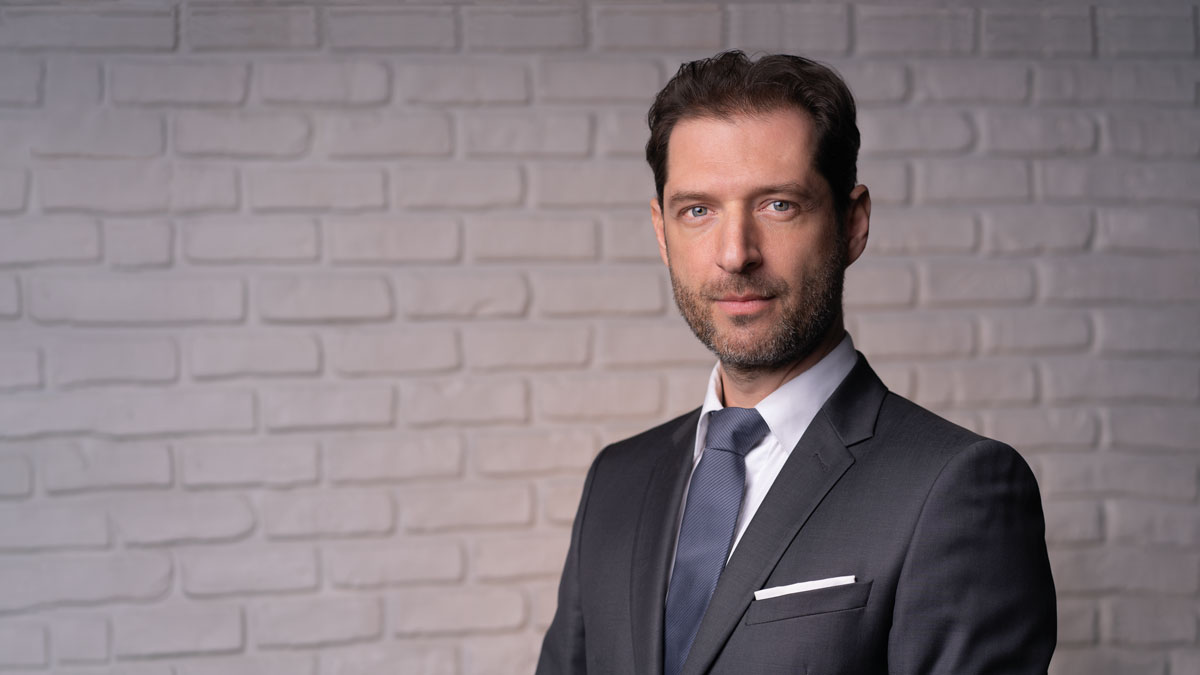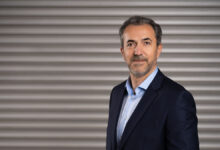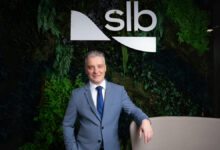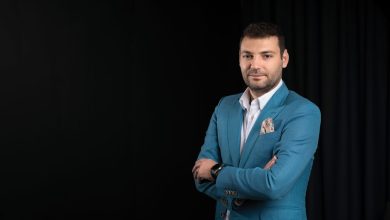Răzvan Copoiu, CEO Signify Romania & South East Europe: Unlocking Energy Efficiency Potential of Smart Lighting
With 2020 sales of EUR 6.5 billion, approximately 38,000 employees and a presence in over 70 countries, Signify is unlocking the extraordinary potential of light for brighter lives and a better world. We spoke about smart lighting, digital transformation, and the power of innovation with Răzvan Copoiu, CEO Signify Romania & South East Europe.
Signify is the world leader in lighting for professionals & consumers, and also in connected lighting for the Internet of Things. Their energy efficient lighting products, systems and services enable the customers to enjoy a superior quality of light, and make people’s lives safer and more comfortable, businesses more productive, and cities more livable.
Dear Răzvan Copoiu, in accordance with our conversation topic, please shed light on your career path. Why Signify? And why now?
Răzvan Copoiu: I have joined the Signify team last August, for the position of CEO for Signify Romania and 10 other countries in the South-Eastern region of Europe. This career transition came naturally, continuing my journey of 22 years professional experience in the field of renewable energy, industrial automation, industrial software, IoT and Cloud-based solutions, promoting and developing the Industry 4.0 further and further.
Working for Signify means being creative and adaptive, and always looking for what future will bring. I am proud to be part of a team who is constantly ahead of the curve, with a culture promoting continuous learning, commitment to diversity and inclusion, an undisputable leader in the lighting business.
What is your core strategy at Signify? What are your current roles and job responsibilities?
Răzvan Copoiu: As CEO of Signify for the SEE Cluster, my mission is the continuous growth of the business, both strategically and operationally, as well as maintaining the company’s position in Romania as a leader in lighting, including IoT and Industry 4.0, and of course, introducing our new innovative solutions to all the 10 markets of the South Eastern Europe.
My personal belief is that, as light becomes a new intelligent language, we will redefine how to use the light, so people could benefit more, in so many new ways, undeveloped so far.
For more than 125 years the company has pioneered breakthroughs in lighting and been the driving force for many innovations. How your innovations contribute to a safer, smarter, more sustainable world?
Răzvan Copoiu: At Signify, we have a long-term commitment to increase the energy efficiency of our products and reduce energy use in our production facilities.
In September 2020, we became the first lighting company to be carbon neutral in its operations and we shifted to 100% renewable electricity supply, ahead of our target and ahead of the aspirations set out by the Paris Agreement. Moreover, our packaging policy requires for the use of 80% recycled paper, and, by the end of 2021, we aim to 100% eliminate all plastic from our packaging.
Through our digital LED technology, Signify offers light that is up to 80% more energy efficient, compared with conventional technologies, and over 80% of our revenues are coming from sustainable products, systems and services. Another great example of circular economy principles are our 3D printed luminaires, manufactured using recycled polycarbonate and customizable to meet our customers’ needs.
91% of total waste was recycled in 2020 and we continue to recycle 100% of our metal and glass waste.
What means intelligent lighting and how does it help the customers to improve efficiency, safety, and optimize operations? What are most important business applications of your Interact IoT platform?
Răzvan Copoiu: We are talking now about connected lighting. Over the years, Signify has strengthened its position as the industry leader in connected lighting, going further to IoT and cloud-based solutions.
We deliver connected lighting solutions for cities, retail, office buildings, industry facilities, hospitality, sport venues and, least but not last, landmarks.
Signify’s Interact IoT platform is designed to handle data collected from the growing number of connected light points, sensor devices and systems. The transition to connected lighting is occurring rapidly. Potential savings for customers based on total cost of ownership are significant. As an example, Interact City enables cities to centrally manage street lighting and adapt intensity depending on weather, traffic movement or organized events, thereby realizing significant energy cost savings on top of the led solutions, if any.
And this is the path to Industry 4.0 and IoT. A smart building platform is as a collection of verticals: a smart ventilation system vertical, a smart heating system vertical, a smart lighting system vertical. And the real ‘smart’ is when these verticals work all together connected: they share data and can trigger one another based on sensed conditions or combinations of factors.
Taken as a whole, a well-designed smart building functions like a single unit, which human managers can control from an integrated dashboard accessible on a tablet or other such device. When it comes to what such a smart system can do, the sky’s the limit.
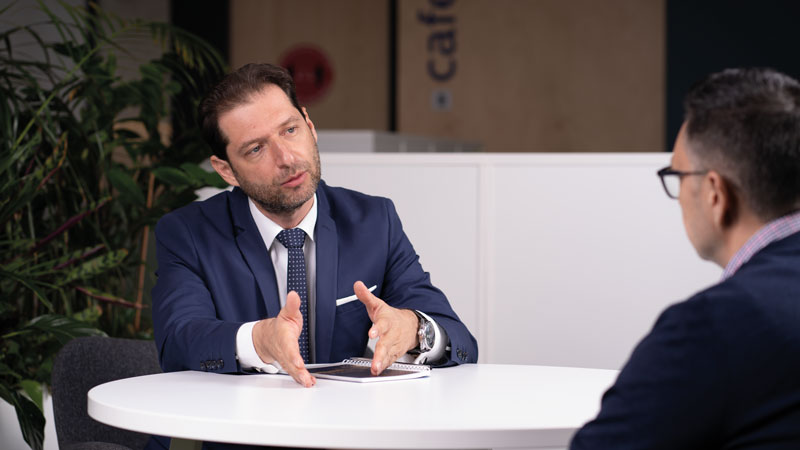
In a new era of digital revolution, how do you manage to succeed? What are Signify main assets?
Răzvan Copoiu: The COVID-19 pandemic has been a testing time for technology as companies scramble to get their workforces up to speed on working remotely.
This is the new way of doing things: tune in to the market, listen, hear what other people are doing, structure what we’ve learned, then see what we can work with. This is how we keep our finger on the pulse on what is happening in the markets and what customers want.
Signify is a front runner when it comes to digitalizing light. I am so proud when I look at our innovation, and our team, and what we have been doing with, for example, our Interact software portfolio, or with our Philips Hue.
In 2020, in terms of innovation, we have accomplished major milestones that are worth mentioning, such as horticulture LED lighting for sustainable food production in indoor vertical farms, and also unique UV-C disinfection luminaires.
We have expanded our multi-brand smart connected lighting portfolio with numerous product launches for both Philips Hue who continue to consolidate the market leader position, but also the more accessible WiZ who I developing amazingly fast, we have introduced NatureConnect, a special light source for offices, as part of our Human-Centric lighting offer for the good health and wellbeing of the employees, we have released new solar outdoor lighting luminaires, new 3D printed luminaires aligned with the circular economy, and many others.
We were quite active during pandemic times.
How much does your company invest in R&D? How do you balance investments in your current operations against disruption and innovation with future potential?
Răzvan Copoiu: We have pioneered many of the key breakthroughs in lighting over the past 130 years. From the dawn of the electric light, we have led the development of the LED industry.
The level of our R&D investment is 4.8% of sales worldwide, and we have 17.750 patents registered until today.
Signify & ex Philips Lighting’s LED patents include inventions such as warm dimming, high colour rendering white, tunable white, colour illumination and efficient light mixing and distribution and there were our scientists that developed the first 60W replacement LED light bulb as well as the world’s most energy efficient light bulb.
From light recipes that increase the quality and yield of different vegetables, to lights that give fast internet connectivity via Li-Fi, we are constantly innovating.
In 2018 we have invented an alternative to Wifi. Our game-changing technology provides a fast, stable broadband connection through light waves. It is ideal in areas where WiFi cannot be used or where there’s poor or no wireless connection.
Also, our horticultural lighting experts have created special ‘light recipes’ tailored to the unique requirements of particular plants and vegetables. These enable growers to improve quality, taste and yield while saving operating costs.

Signify is leading the industry’s expansion to lighting systems in both the professional and consumer markets. Your position as the industry leader in connected lighting makes Signify the lighting company for the Internet of Things (IoT). How do you see the market evolving in this area?
Răzvan Copoiu: The pandemic proved us that we need global action to improve well-being and achieve sustainability.
In 2021 and beyond, we’ll see more connected technologies put to work toward achieving precisely these ends. We’ll see this in entertainment and hospitality, where contactless authentication will improve security. We’ll see it on manufacturing floors, where enhanced indoor positioning services will make work smoother and cut down on accidents. We’ll see it in agriculture, where soil and atmospheric sensors will render the use of pesticides and fertilizer more targeted, efficient, and resource friendly.
And we see AI bots replacing more and more human activities.
It will be a different future than we dreamed about on the eve of 2020. It will be one in which we are wiser about the potential of IoT tech to help us meet these challenges and change things for the better.
What are the key benefits of using your products and solutions? What is connected lighting and what are the disadvantages of existing lighting system?
Răzvan Copoiu: We have come a long way since the Edison lamp. The LED brought the energy efficiency at a new level.
The electricity bills are less than half if we replace conventional lights with LED. Moreover, our Interact IoT platform for connected lighting combines the best digital lighting products with cloud-based system management and data services.
Interact can help to get more value from something that you already own – your lighting system.
First by helping you get even better energy-efficient LED luminaires. Even smaller electricity bills.
Next by connecting your lighting system using standard networking and communications technologies.
With better lighting management, diagnoses and maintenance, connected lighting help you lower costs and operate more efficient, no matter if we are talking about a city, office building, retail shop or warehouse.
Please name your top 5 smart objectives to focus on in 2021.
Răzvan Copoiu: In 2021, our main objective is to help Romania make the transition to a greener, smarter and prosperous future for current and next generations, through our Green Switch program that is corelated with the European Green Deal.
There are around 2 million street lighting poles in Romania. If we add up all these values, we can think of savings up to 700 GWh, leading to energy costs reduced by 75 million euros – only from public lighting sector, and the key to this are the cloud-based, remote-controlled, energy-efficient lighting solutions.
Signify has extended the study not only to the public lighting, but also to Education and Healthcare segments. In all these three sectors, a complete transition to LED would mean for Romania an annual electricity cost reduction of over 150 million euros, which represents over 510,000 tons of CO2 that can be avoided every year, the equivalent of the amount of 23 million fully grown trees can absorb in a year.
We have already developed innovative smart-city public lighting solutions in Romania, in Bucharest and Alba Iulia, which now benefit from Interact’s open technology and lighting system.
We have the best know-how, and we will share it.
The second focus of this year is to create awareness in the education sector, by delivering a reference project for schools, as an example of what is really needed for our children to study in the best lighting conditions that will keep them healthy and focused. And if possible, we will extend it to hospitals, helping the patients to get well faster.
Then, we would like to help growing the awareness of our beautiful country, by illuminating Romanian historical and other important buildings with best-in-class architectural lighting.
We have beautiful projects done already, like the well-known Place of Culture from Iasi, Deva Fortress, Medgidia Bridge or Alba Iulia, just to mention few of them, and thanks to Signify lighting solutions the authorities started to understand the benefits which architectural lighting can bring in terms of tourism, community development and city scaping.
The fourth direction worth mentioning is the lighting for sport arenas and stadiums in Romania. Signify changes the rules of the traditional game by introducing sustainable, efficient lighting systems that contribute to design the atmosphere. Just go to Steaua stadium, and you will understand we are talking about the next level of entertainment lighting.
To finalize the priority list, we have reached a less desired topic – the pandemic. Signify can ensure a safe and comfortable environment for their employees with our UV-C Upper-Air luminaires.
Used extensively by scientists for over 40 years, UV-C is a known disinfectant for air, water and surfaces. All bacteria and viruses tested to date (many hundreds over the years, including various coronaviruses) respond to UV-C radiation.
Signify has been at the forefront of UV technology for many years and has a proven track record of developing innovative UV-C products and applications. In laboratory testing, Signify’s UV-C light sources neutralized the SARS-CoV-2 virus from the air in less than 10 min.
IEA’s assessment of 2020 trends and 2021 forecasts warns of lax electricity demand in all major economies over the year, with the notable exception of China, accompanied by a general plummet in wholesale power prices. What is the future of power?
Răzvan Copoiu: More than 75% of the EU’s greenhouse gas emissions come from energy production and use, so it’s clear why the EU must decarbonize its energy system to reach the Green Deal’s climate objectives.
So not just less energy, but also less carbon!
The Green Deal calls for several measures, including linking renewables to the grid, promoting connected technologies, and boosting the energy efficiency of electrical products and devices.
LED and connected lighting offer one of the simplest and most often overlooked paths to reducing greenhouse gas emissions. Not only that, but IoT capabilities built on top of the connected lighting infrastructure can help make the smart future a reality today, spurring job creation and driving prosperity.
Energy efficiency battles climate change by reducing energy usage. Clean energy battles climate change by decarbonizing the energy that is used. Solar and hybrid-solar streetlights from Signify reduce carbon emissions while leveraging the most cost-efficient energy source around: the sun.
What are from your viewpoint the changes needed in this environment we are dealing with today for a clean future?
Răzvan Copoiu: Energy consumption has been rapidly increasing for several years, in line with rapidly declining natural resources; this has to change.
In order to make the most out of these resources, more companies need to make the switch to a circular economy approach.
A circular economy uses resources more effectively by creating rather than wasting, using rather than owning, and reusing rather than disposing.
Our company became last year the first lighting company to reach this extraordinary target of carbon neutrality in its operations, and we shifted to 100% renewable electricity supply. Also, our packaging policy is to 100% eliminate all plastic by the end of 2021. And our car fleet policy is now focusing electric vehicles.
So, we have some experience in this. And our products reflect our sustainability strategy. When we relate the circular economy to lighting, products are designed in a fully sustainable way.
When the lighting product comes to the end of its lifetime it can be upgraded and reused, or the materials and parts can be returned for repurposing or recycling.
If we, the industry, manage to understand and apply these principles, we will all enjoy a brighter life, in a better world.


